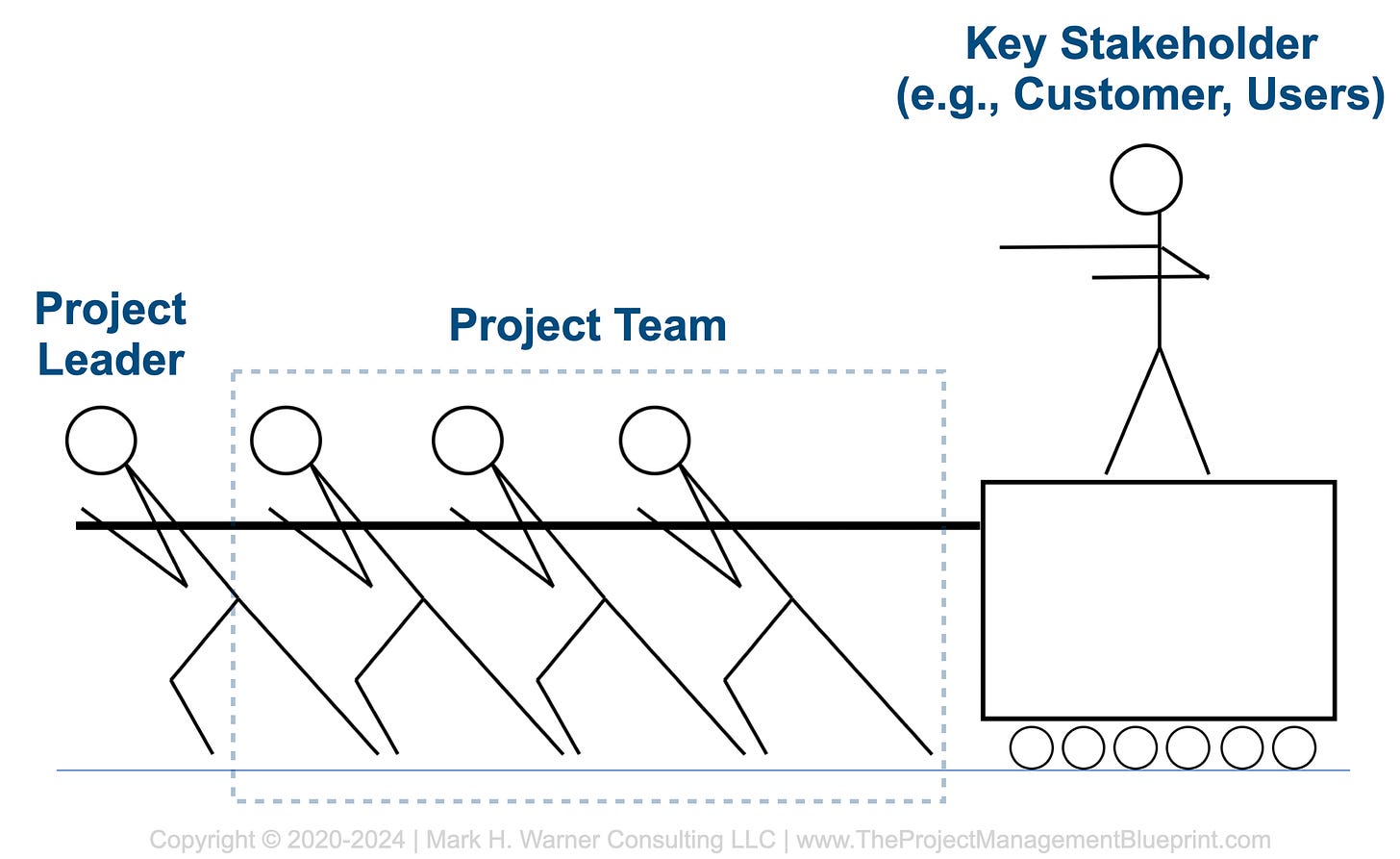Start with Who?
Identifying Key Stakeholders Is Job #1
The first and most crucial step in any new project is identifying key stakeholders. Before diving into schedules, budgets, or technical details, it's essential to understand who wants the project—and why. Who are the customers? The users? The people that truly want this project? And why is the project important to them?
Identifying key stakeholders not only clarifies the project's purpose but also reveals potential challenges and opportunities that might otherwise remain hidden. By pinpointing our stakeholders early on, we lay the foundation for effective communication, align expectations, and ensure that the project's goals truly reflect the needs of those it aims to serve.
We identify stakeholders a number of ways, but ultimately, we’re looking for individuals or entities that have a) interest in the project; and/or b) influence (or power) over the project. High interest + high influence are the stakeholders we have to engage with and pay attention to the most. Low interest + low influence stakeholders should be simply monitored. Those with high interest + low influence should be kept informed, and those with low interest + high influence should be tracked and kept satisfied to the best of your abilities.
It’s also important to note which stakeholders are pro, anti-, or neutral toward the project. High interest + high influence + pro-project are those that we call “key” stakeholders. These are often users, customers, partners, and investors. Key stakeholders are generally the most important of all stakeholders to identify, document, and engagement with over the course of the project. Make them feel like part of the project team, and your life as a project manager will get significantly easier.
Remember, a project's success isn't solely measured by its technical execution, but by how well it satisfies its stakeholders. And the first step to the latter is understanding who we’re trying to satisfy.




Hi Jerry! Thanks for the kind words about the posts. (And I hear you about being shocked with how long we've been doing this; I started my career in 1982, so I'm just a year or two behind you. Yikes!) I'm glad that you've found the material useful. Please feel free to snip parts as required, and please point people back to my substack if you could, too. Finally, good luck on the new project. Communicating requirements, constraints, KPPs, etc up front--and getting written buy-in from the stakeholders on these things--is one of the secrets to project success for sure. Cheers!
Hi Mark, this whole series is phenomenal. I have been a construction project manager for 44 years (I can’t believe I’m saying that). I have been formally trained and informally trained, ha ha. I am in a position now to pass along any wisdom that I have gained along to about 25 of our project managers. This is so clear and concise and accurate and perfect that I’m going to snip parts of it and pass it along to them. I’m also going to use it on the next project that I am working on which is increasing the scope of the emergency power in an ambulatory surgery center. The reason that this is being added is because the end users state they have they were not aware that the cooling system would go down under a loss of power. Since I was the original project manager as well, I could argue that that was always the original program and intent for the project. On the other hand, we did not apparently do an adequate job of ensuring everyone was clear on that and documenting that direction. So lesson learned and we will use this format moving forward. Thanks!